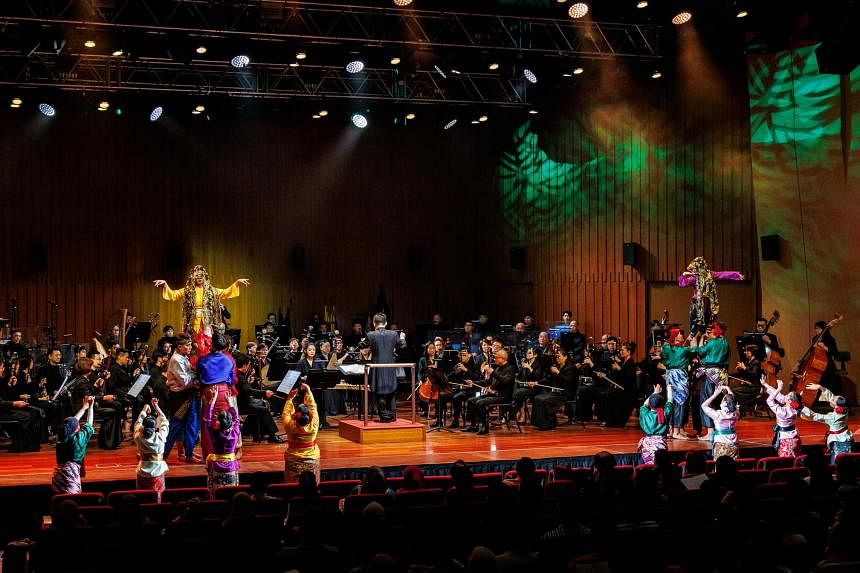Singapore Chinese Orchestra’s performance of composer Wang Chenwei’s The Sisters’ Islands (2006), with choreography by Cultural Medallion recipient Osman Abdul Hamid's Era Dance Theatre. Seamless Singapore Chinese Orchestra Singapore Conference Hall July 20 The opening concert of Singapore Chinese Orchestra’s (SCO) 2024-25 season, led by principal conductor Quek Ling Kiong, was nothing short of spectacular. True to its credo of being the “people’s orchestra”, SCO’s exploration of transcultural genres bore fruit with its collaboration with 2023 Cultural Medallion recipient Osman Abdul Hamid.
The Malay dance master’s Era Dance Theatre (EDT) took centre stage in a choreographed performance of SCO composer-in-residence Wang Chenwei’s The Sisters’ Islands (2006), his award-winning symphonic poem based on a well-known Malay legend. The music’s deft use of lilting asli, zapin dances and the pelog scale made it eminently suitable for choreography. Seventeen dancers filled the aisles and stage, re-enacting the graceful sashaying of the eponymous sisters and villagers, before their abduction by pirates.

The playful and later angst-filled movements echoed the dramatic programme music, adding another dimension to an already vividly detailed score. The sisters’ immortalisation as the island pair in the Straits of Singapore was represented by both dancers held aloft high above the orchestra as the music reached its climax. After this impressive showing, it is now almost impossible for this reviewer to hear the music without imagining the dance movements.
Also involving EDT was a sole veiled dancer in Chung Yiu-kwong’s Girl From Kroran, a single-movement yangqin concerto with SCO principal Qu Jianqing as soloist. Kroran was an ancient kingdom along the Silk Road which suddenly disappeared during the 4th century, and the music was distinctly Central Asian with its Arabic influences. The dancer, soon unveiled, performed several dervish-like pirouettes before hightailing offstage, just as the pace escalated alarmingly into terminal velocity.
Then the super-virtuoso in Qu took over, stealing the stage by romping through the high-risk high-stakes score completely from memory. Any misplaced note would have spelt disaster, but the adrenaline-fuelled soloist and turbocharged ensemble gloriously prevailed. The balance of this well-structured programme had much to recommend it.
Beginning the evening was Jiang Ying’s Impressions Of Chinese Music: Daqu, the movement’s title translating into Big Composition. This sumptuous score, opening with a lovely guan solo, resembled film music, and its well-sustained waves of sound approximated that of a Western symphony orchestra. Following this was Peng Xiuwen’s Flowing Water, essentially a river portrait tracing the origins of the mighty Yangtze from trickling droplets (guzheng) to limpid streams (lyrical huqin) to soaring waves before concluding in harmonious peace.
The concert closed with the two movements of Liu Changyuan’s Symphony Of Sizhu. Jiangnan Sizhu is the beloved tradition of “silk and bamboo”, delighting in the finery of lush string (silk) and wind (bamboo) playing. Its beauty was captured in an intimate moment when Yu Jia’s pipa, Huang Guifang’s sanxian and Zhao Jianhua’s erhu were given free rein to express themselves.
The animated conclusion was so well received, it was given an encore, with the audience encouraged to hum along and ending the evening in high spirits. Join ST's Telegram channel and get the latest breaking news delivered to you. Read 3 articles and stand to win rewards Spin the wheel now.



















